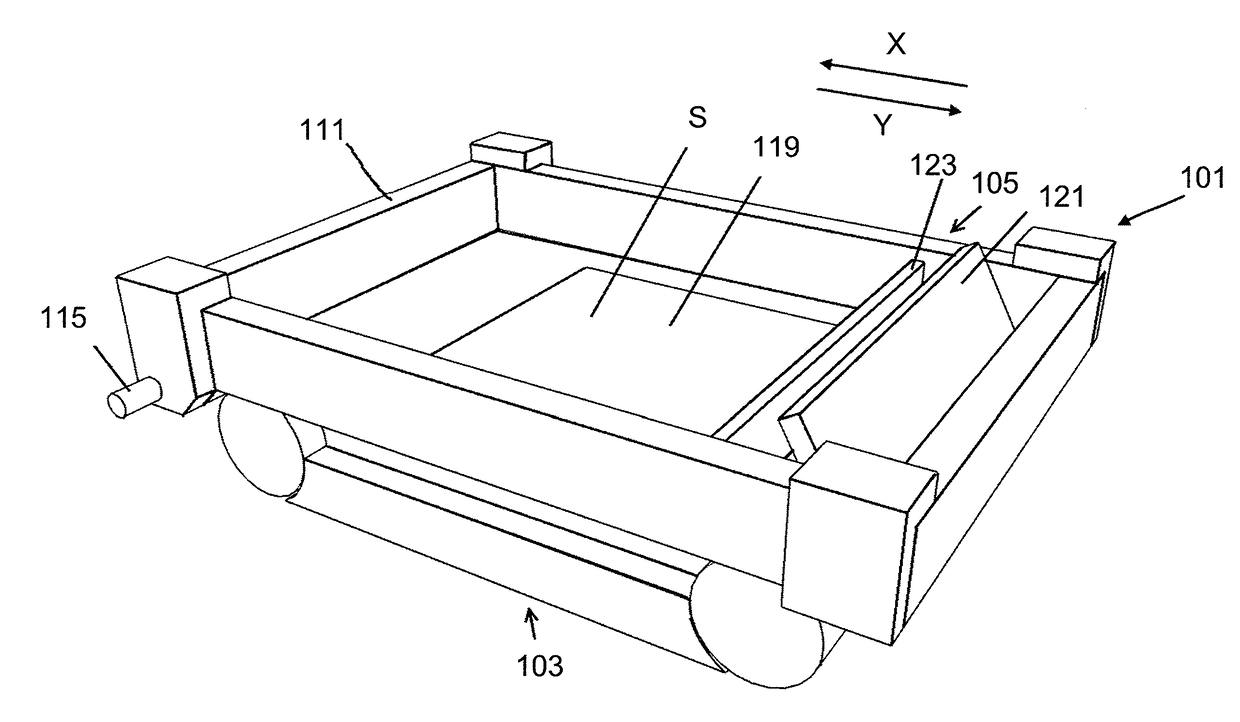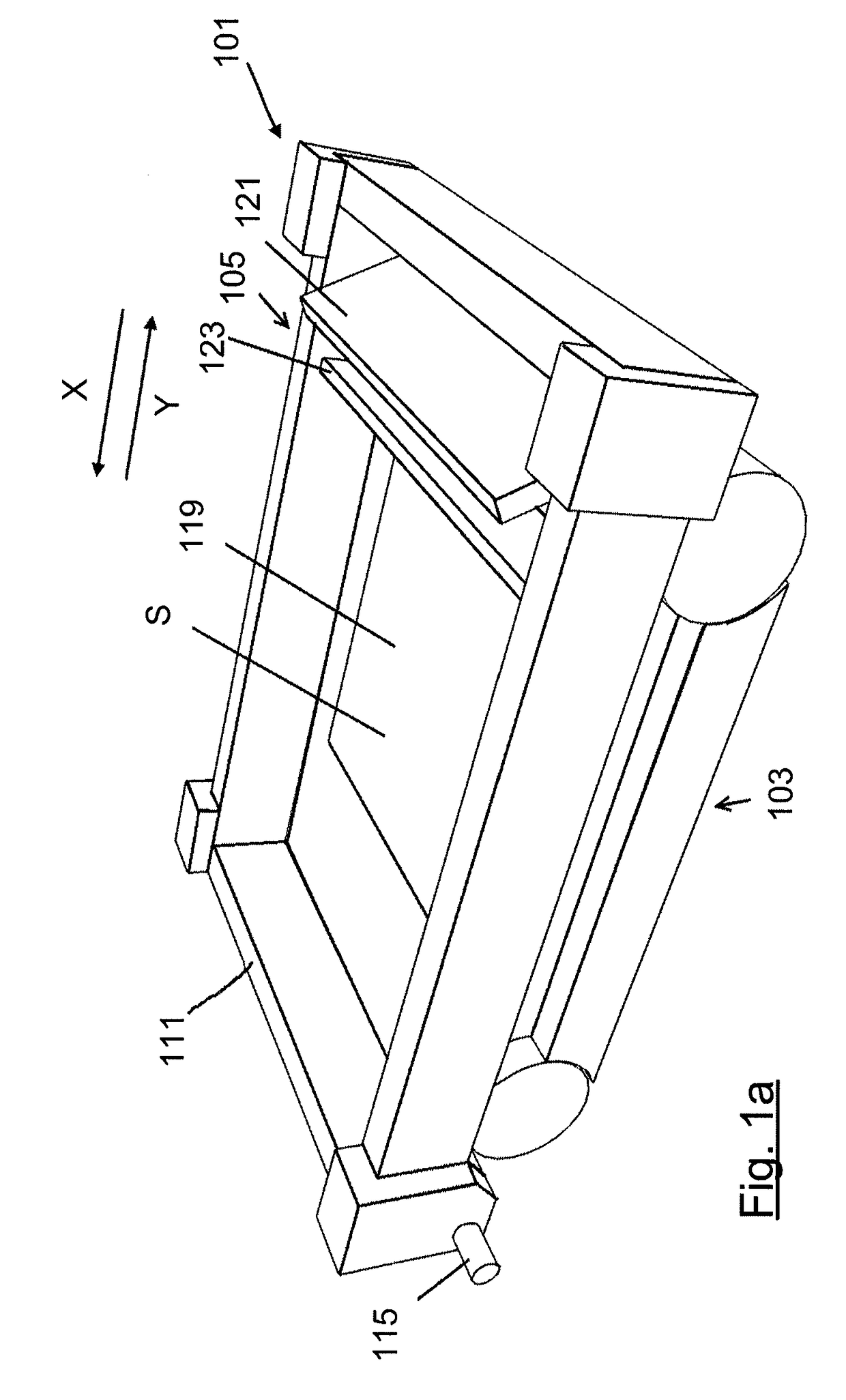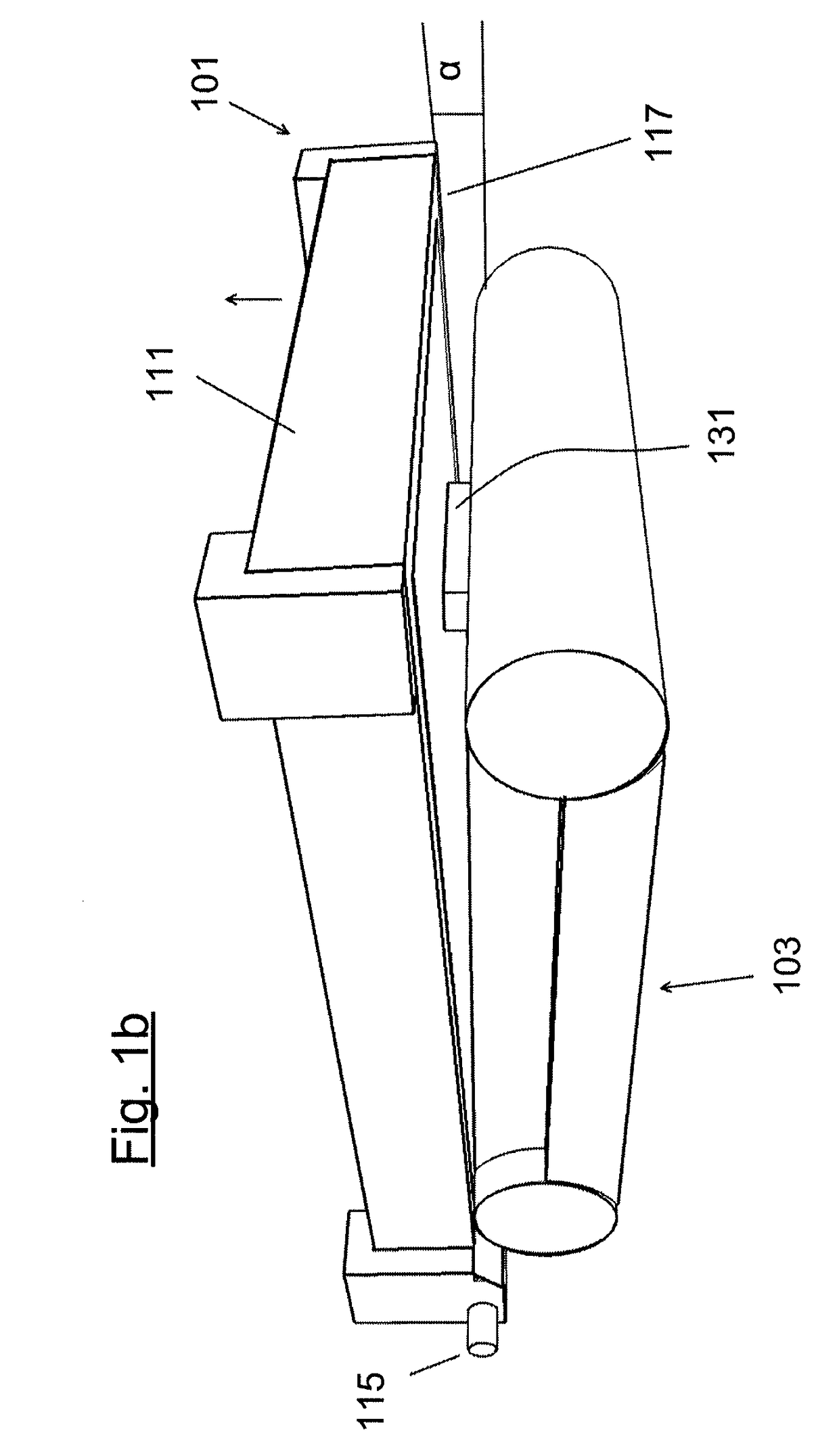Screen printing apparatus and method
a technology of printing apparatus and screen, applied in the direction of printing, printing, printed circuit manufacture, etc., can solve the problems of uneven print uniformity, reduced life of printing screen, uneven print quality across the area of printed substrate, etc., to improve separation between printing screen and substrate, reduce the tension applied to the screen, and improve the effect of separation
- Summary
- Abstract
- Description
- Claims
- Application Information
AI Technical Summary
Benefits of technology
Problems solved by technology
Method used
Image
Examples
first embodiment
[0053]FIGS. 1(a) and (b) illustrate a screen printing apparatus in accordance with the present invention.
[0054]The screen printing apparatus comprises a printing screen unit 101 through which a print medium is printed onto a substrate S, a support 103, in this embodiment in the form of a platen, here disposed beneath the printing screen unit 101, on which the substrate S is supported during printing, and a print head 105, which is operative in a print stroke to print print medium onto the substrate S.
[0055]The printing screen unit 101 comprises a frame 111, in this embodiment of rectangular shape, which is pivotable about a pivot 115 at one edge of the frame 111, and a printing screen 117 which is mounted under tension to the frame 111.
[0056]In this embodiment the printing screen unit 101 is pivoted about the pivot 115 by operation of an actuator (not illustrated), which acts to move the printing screen 117 away from the substrate S, in this embodiment upwardly in relation to the su...
PUM
 Login to View More
Login to View More Abstract
Description
Claims
Application Information
 Login to View More
Login to View More - R&D
- Intellectual Property
- Life Sciences
- Materials
- Tech Scout
- Unparalleled Data Quality
- Higher Quality Content
- 60% Fewer Hallucinations
Browse by: Latest US Patents, China's latest patents, Technical Efficacy Thesaurus, Application Domain, Technology Topic, Popular Technical Reports.
© 2025 PatSnap. All rights reserved.Legal|Privacy policy|Modern Slavery Act Transparency Statement|Sitemap|About US| Contact US: help@patsnap.com



